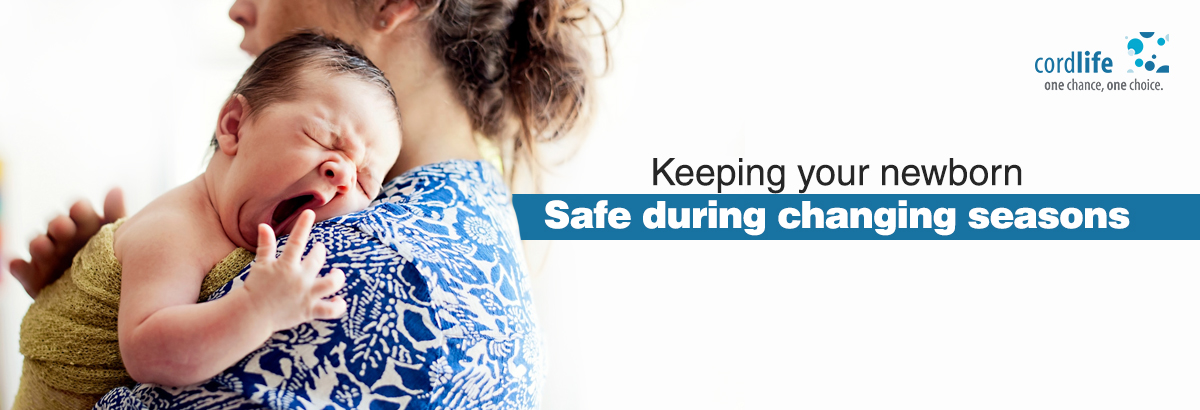Table of Contents
Welcoming a newborn is one of life’s most profound experiences. It shifts your focus, your schedule, and even how you feel the weather. You start to notice things you may have never paid attention to before, air creeping in through a window, how your baby’s breathing changes during sleep, or how they curl their tiny fingers around yours. These everyday moments become meaningful, and so does your growing awareness of your baby’s needs.
With this awareness comes a new kind of care-gentle, constant, and intuitive. As the seasons shift, so does your routine. You might find yourself adjusting the thermostat more often, double-checking the breeze coming through a cracked window, or wondering how many layers your baby needs. This is newborn care during seasonal changes about being perfect, but about being present and responsive.
How Babies React to Temperature
Babies aren’t just small versions of adults- their bodies work differently. They can’t regulate their temperature well, their skin is thinner, and their immune systems are still developing. Even small changes in weather, like a cool breeze or mild sunshine, affect them more than you might expect.
That’s why understanding how to protect your baby from weather changes is so important. Whether it’s summer heat or winter chill, you’re not protecting your baby from the world; you’re gently helping them adjust to it, safely and gradually.
How to Dress Your Baby for the Weather
Your baby can’t tell you they’re cold or too warm, but their body will give you signs: red cheeks, a fussy cry, or stiff little limbs. Over time, you’ll get better at noticing what these cues mean.
Cold Weather
Use layers. Start with a soft cotton base, add something warm like fleece or wool, and finish with a wind- or water-resistant layer. Don’t forget a hat. Babies lose heat through their heads quickly. This is an essential part of newborn protection from cold and heat.
Warm Weather
Go for light, breathable fabrics like cotton. Keep your baby out of direct sunlight as much as possible and avoid synthetic materials. This is key when thinking about how to keep a baby cool in summer.
Transitional Seasons
Layers are key. Dress your baby in clothing that can easily be added or removed. If you need a light jacket, your baby probably needs an extra layer too. These are practical baby clothing tips for different seasons that go a long way in keeping your little one safe and comfortable.
Recognising Your Baby’s Temperature Cues
You’ll learn to recognise the subtle signs when your baby is too warm or too cold. Watch for:
- A warm or sweaty chest
- Cold or blotchy skin
- Unusual crying or fussiness
To check their temperature, feel their chest or the back of their neck. Checking hands and feet can be misleading. These observations are part of everyday baby health in changing weather awareness.
The goal isn’t to overthink everything but to be gently attentive. Trusting your instincts and learning from your baby’s cues is at the heart of good seasonal care.
Dealing with Extreme Weather Conditions
You don’t have to stay indoors all the time, but it helps to be prepared:
- In winter: Avoid long walks when it’s windy or freezing. Use stroller covers that keep warmth in but still allow airflow. In the car, avoid bulky jackets under the seatbelt-instead, dress your baby in warm layers and add a blanket over the straps. These tips can help you prevent newborns from catching a cold during the colder months.
- In summer: Stay out of direct sunlight between 10 AM and 3 PM. Offer extra feeds to keep your baby hydrated. Keep indoor temperatures between 68–72°F and ensure good airflow, but no direct drafts. These are essential baby room temperature control tips to maintain comfort during warmer seasons.
Remember, you’re not aiming for a perfect environment, a safe, comfortable one.
Protecting Against Seasonal Illness
As seasons change, cold and flu viruses become more common. Newborns are especially vulnerable, so staying ahead of illnesses matters.
- Wash your hands often, and anyone who interacts with your baby.
- Clean pacifiers, bottles, and toys regularly, especially after outings.
- Keep up with all paediatric appointments and vaccinations, for both you and your baby.
- Watch for signs like unusual tiredness, changes in appetite, or fussiness. When in doubt, contact your paediatrician.
These habits support seasonal illness prevention in babies, and they also contribute to immune support for newborns, especially during high-risk times of the year.
Creating a Comfortable Sleep Space
Your baby’s sleep environment should adapt to the seasons:
- In winter: Keep the crib away from windows and heating vents. Use a sleep sack instead of blankets to prevent overheating and reduce the risk of Sudden Infant Death Syndrome (SIDS).
- In summer: Dress your baby in breathable pyjamas and ensure there’s proper airflow in the room, but never a fan or draft blowing directly on them.
Sleep is crucial for healing, growth, and immune development. A consistent, cosy space is one of the most effective seasonal safety tips for babies that you can implement daily.
Give Yourself Grace
You’ll forget things. You’ll get it wrong sometimes. That’s okay.
Navigating newborn care during seasonal changes isn’t about getting it all right the first time. It’s about paying attention, learning, and adapting. Every small misstep is just another step in the journey.
The One Thing That Never Changes: You
You don’t have to know everything. Just being observant, loving, and responsive is enough. Each time you adjust a layer, block a draft, or check the forecast, you’re doing something important. In a world that’s always shifting between heat waves and cold snaps, you are your baby’s constant.
